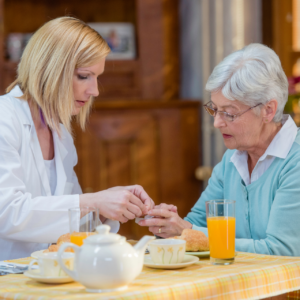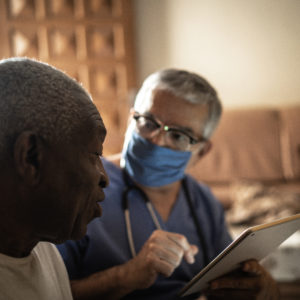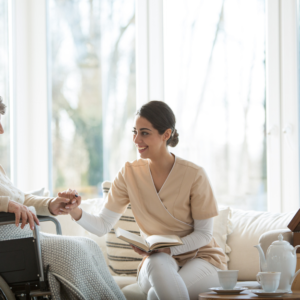Reducing Isolation and Loneliness with Care at Home
It is fair to say that in the United States today, there is an epidemic of loneliness and isolation affecting a substantial number of adults….
Rehabilitation Care at Home: Beyond Home Health
Traditionally, patients that require medically-necessary rehabilitation care are offered placement in a skilled nursing facility (SNF) or subacute rehab (SAR) to receive these services. In…
Rehabilitation Care at Home and its Value to Communities and Hospitals
In 2017 Contessa introduced a unique alternative to subacute rehabilitation (SAR) and traditional skilled nursing facilities (SNFs): our Rehabilitation Care at Home program. Now into…
How Contessa Solves Healthcare Fragmentation
Even as a physician, navigating a recent medication change took me two weeks of frustrating back and forth phone calls and messages to my doctor,…
Why People Living with Dementia Do Better With Care at Home
There really is no place like home for the more than six million Americans living with dementia. These individuals face memory loss and other cognitive…
Understanding Patients’ Health Through Social Factors and Habits at Home
At home, we are our whole selves. At a hospital, we might barely be half. To provide the most comprehensive and high-quality care that treats…
Why Rehabilitation Care is Best Done at Home
There was a time when the only option for additional care after a hospital stay was to be transferred to a rehab or skilled nursing…
What Makes Hospital Care at Home Nursing Different
When thinking about the role of nurses, we often default to thinking about what happens within the hospital. With new modalities of care in new…
Why the Monitoring Phase is Critical for Hospital Care at Home
While remote monitoring outside of the hospital is common, our teams gain in-depth knowledge of a patient and their health during a 30-day episode, all while in their home. Contess’s monitoring phase gives us the ability to intervene more quickly when needed and more accurately identify longitudinal patient needs.
Stronger Together: How Contessa Partners with Your Clinical Team
It’s no secret: partnering with Contessa can transform already-prominent hospitals and health-systems into highly desired destinations of true patient-centered care. Our organization works with partners…
Contessa Palliative Care: Bringing Care at Home Full-Circle
Grappling with a serious or complex illness can be a challenge at any age, and that’s even harder when you’re managing it alone. Unfortunately, many…
More From This Expert
American College of Emergency Physicians Section on Telehealth: Spotlight on Hospital at Home
ACEP Winter Newsletter | December 2023 In this edition of the American College of Emergency Physicians Section on Telehealth Newsletter, Contessa’s Senior Vice President and National Medical Director, Michael Nottidge, MD, MPH, MBA, shared his insights on hospital at home in their Spotlight Section, describing the benefits of this approach to virtual care. You can…











